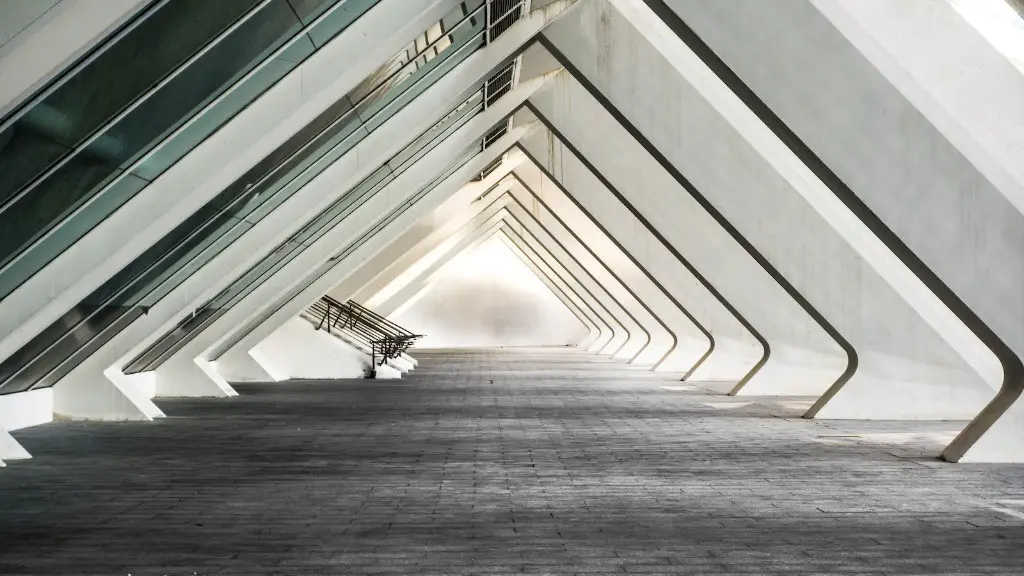Overview of Green Architecture
Green architecture is a term used to define a style of building that puts environmental and economic considerations at the forefront of the construction and design process. The idea behind green architecture is to create public and private spaces that are not only eco-friendly but also aesthetically appealing. The ultimate aim is to create structures that reduce energy consumption, use renewable energy sources, and conserve the environment in ways that enhance the quality of life for those who inhabit and visit them.
Issues With Traditional Building Techniques
Traditional architectural styles have often overlooked the environmental impact of construction. Building materials like cement, steel, and other chemical-based solutions are often used without thought to their long-term effects on the environment. These materials often contribute to pollution and soil erosion, while also increasing the amount of energy consumption needed during construction and the lifespan of the building.
In addition, traditional building techniques often fail to take into consideration the effects that the structure may have on the surrounding ecological system. For example, the deforestation of a particular area, the removal of a unique species of living organism, or the disruption of a particular community’s way of life.
The Principles Of Green Architecture
Green architecture defines itself by four main principles: sustainable materials, renewable energy sources, optimal energy efficiency, and an ecologically sensitive design. When taken together, these four principles create an architecture that carefully considers the environment and strives to conserve resources. These objectives are often achieved through the use of renewable energy sources such as solar panels, the use of “green” building materials such as bamboo, the efficient use of space, and the incorporation of features such as green roofs and green walls.
The idea of green architecture is not a new concept. Much of the world’s great architectural works, such as the ancient city of Machu Picchu in Peru, were actually built using sustainable practices. These practices included the use of locally available materials, the integration of the settlement into the natural environment, and the conservation of resources.
The Benefits Of Green Architecture
Green architecture offers several advantageous benefits depending on the project. These can include the reduction of energy and water consumption, the decrease in pollution and waste, the conservation of natural resources, and the improvement of air quality in the surrounding area. Green architecture can also offer economic benefits such as in terms of insulation, heating and cooling costs, and longevity of a building.
The most important benefit, however, may be the improvement to the environmental health of the surrounding area. Buildings designed according to green architecture principles can create a healthier, more harmonious balance between nature and humanity. The ecosystem benefits from renewable energy and sustainable materials, while at the same time, providing comfortable and aesthetically pleasing structures for inhabitants to live, work, and play in.
The Challenges Of Green Architecture
One of the biggest challenges of green architecture is convincing larger corporations and organizations to adopt sustainable practices. Many of these organizations are heavily invested in traditional construction methods and are hesitant to make the shift to green architecture, particularly if it means incurring high initial costs.
These organizations may fear that green architecture techniques may be difficult to implement, or inadequate in comparison to traditional methods. However, the reality is that green architecture has just as much, if not more, potential for offering higher comfort levels, lower energy costs, and improved workplace productivity. These benefits, when compared to the cost of traditional materials, can make the investment in green architecture worthwhile.
Leading Examples of Green Architecture
There are several well-known projects that serve as examples of green architecture, such as the Bigelow Aerospace Complex in California, the Office at Sevensons in London, and the Pittsburgh Towers in Pennsylvania. Each of these projects serves as a testament to the potential of green architecture and the many advantages it can offer.
The Office at Sevensons is a particularly impressive example. The building is completely powered by renewable energy sources, uses recycled materials, and has an efficient ventilation system to maximize air quality. Its design is also tailored to the surrounding environment, making sure to minimize the impact of construction.
Future Of Green Architecture
The shift towards green architecture is likely to continue with more governments, corporations and universities embracing sustainable practices. As the technology and understanding progresses, more projects could be undertaken with updated strategies and bolder designs.
Green architecture offers an effective solution for creating building and structures that impact the environment in a positive way. It is an effective way to utilize renewable energy and resources, while creating unique and attractive spaces that enhance the quality of life in the local area. With the continued growth of green architecture, there is hope that this style of construction will become the standard for buildings around the world.
Participatory Green Architecture Process
Green architecture is all about incorporating a participatory process as part of the building design. This means involving local communities and other stakeholders in discussions, giving them the opportunity to voice their opinion and shape the construction in ways that fit their needs and lifestyle.
Such a process can also serve to reduce resistance from the public, often having benefits such as curbing opposition from environmental groups who may oppose traditional single-office constructions. In addition, it can also provide insight into local culture and the dynamics of the area, leading to a better-designed structure.
Sustainable Design Techniques
Green architecture often heavily emphasizes the use of sustainable design techniques. Such techniques include the use of locally sourced materials whenever possible, as well as implementing renewable energy sources such as solar panels and wind turbines. This can greatly reduce the consumption of natural resources, while reducing dependency on unsustainable energy sources.
It is also important to ensure that the design of the building has minimal impact on the environment. This means carefully considering the positioning of the structure and its layout in order to preserve the existing landscape, as well as protecting any existing species or ecosystems in the vicinity P.
Use Of Technology In Green Architecture
In recent years, the use of technology has become increasingly prevalent in green architecture. Digital tools and analysis techniques are being used to assess the environmental impact of a structure before it is even constructed. This helps architects design buildings to meet the specific needs of a particular region.
Technology is also being used to analyze the materials used in construction and the efficiency of their use. This means that architects are now better equipped to evaluate the impact of the construction process, helping to ensure that the long-term effect of the project is positive.
Conclusion
Green architecture has become an increasingly important factor in modern construction. By considering the environment and incorporating sustainable design techniques, architects are able to create structures that are not only aesthetically pleasing but also eco-friendly. By involving local stakeholders and making the most of existing technologies, green architecture offers the potential for creating public spaces that minimize their environmental impact, while enhancing the quality of life in the local area.





